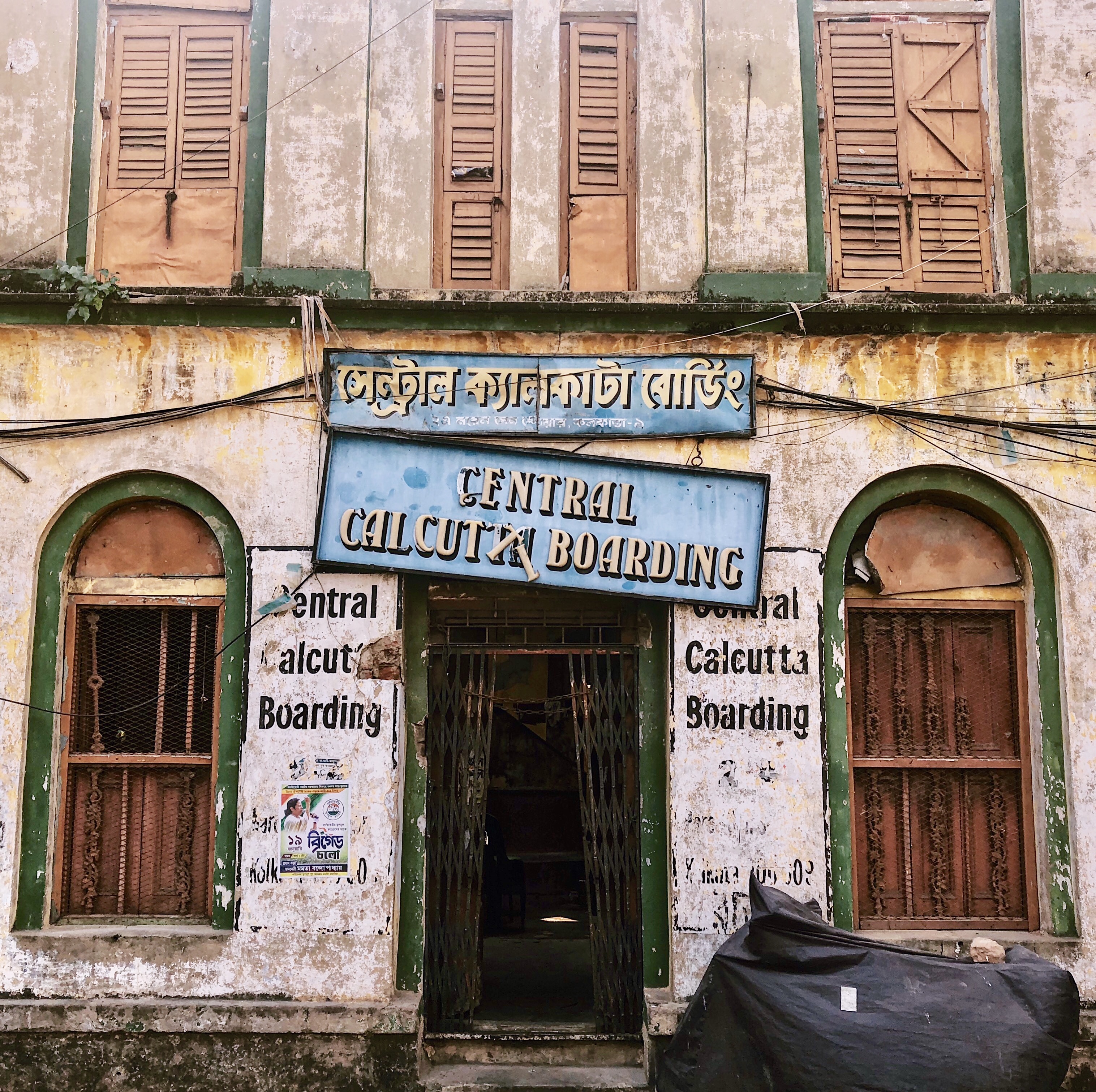Early one morning, out on our exploration through the narrow streets of North Kolkata, an interesting conversation with a curious local led me to delve deeper into the meaning of Heritage and Conservation within an Indian context.

Armed with our smartphones and cameras, we traversed various streets and alleyways, clicking away furiously at anything and everything that caught our attention. One of the perks of this project is undoubtedly stumbling upon remnants of Old Calcutta’s glorious past, something we may have never explored otherwise; classical mansions, delicate iron railings, slender balconies and colourful glass windows stained with the vestiges of time.

Ironwork detailing
(Image Credit: Author)
Glass and louvered openings
(Image Credit: Author)
Neo-Classical facade
(Image Credit: Author)
While we stopped and admired these buildings ever so often, bemused locals passed us by, trying to follow our line of sight and wondering what made our faces light up. The stark difference in our reaction to these buildings as opposed to the rather nonchalant nature of the locals served as the premise for many a conversation amongst ourselves. While standing outside a boarding house on Sitaram Ghose street, we caught the attention of a home-owner who was seemingly surprised with the subject of our attention. We discussed the premise of our project with him and he was quick to revert back with something along the lines of, “but temples and monuments are heritage buildings, a messbari is not”. While my initial reaction was one of infuriation, it took me a while to understand that coming from a background of Conservation handed me a certain privilege of knowledge and understanding as opposed to the locals, who were made to believe that their humble ancestral homes and neighbourhoods had little to no place amongst India’s varied heritage landscape.
How often do funds and manpower repeatedly get poured into structures and monuments of international acclaim while the neighbourhoods, or the veins of the city, languish under disregard and disrepair. Is it through a select group of elite buildings that we wish to present an image of our country, while the real character of the city lies under a shroud of perpetual gloom? There may well be no end to this line of thought and the many discussions that it could foster but let’s limit our scope to that of Calcutta’s messbaris.

Thriving yet crumbling, the mess of Kolkata’s messbaris.
(Image Credit: Author)
Thriving yet crumbling, the mess of Kolkata’s messbaris.
(Image Credit: Author)
As discussed in earlier posts, the mess-culture was the cornerstone of late 19th and early 20th century Calcutta. While on one side there were the intellectuals: poets, authors and the like, developing some of the greatest works of Bengali literature, many boarding houses were dedicated to people from India’s varied communities such as the Marwaris, Muslims, South Indians and even the Scottish and Europeans amongst others. Calcutta’s cosmopolitan nature during its heyday, as the capital of the British Empire, can well be understood by the differing nature of its many messbaris. At a time when these very characteristics of the city are being questioned, it is imperative that initiatives such as the Messbari Project are encouraged and undertaken so as to shine a light on the many carriers of Calcutta’s illustrious past which otherwise may be fading, and fading fast.

Your ‘Mess Bari’ project report is very informative.
LikeLike
Thank you so much! 🙂
LikeLike
Brilliant work on the report Anmol. Significant, informative and much required. Great going!
LikeLike
Thank you so much, Shinjini! 🙂
LikeLike